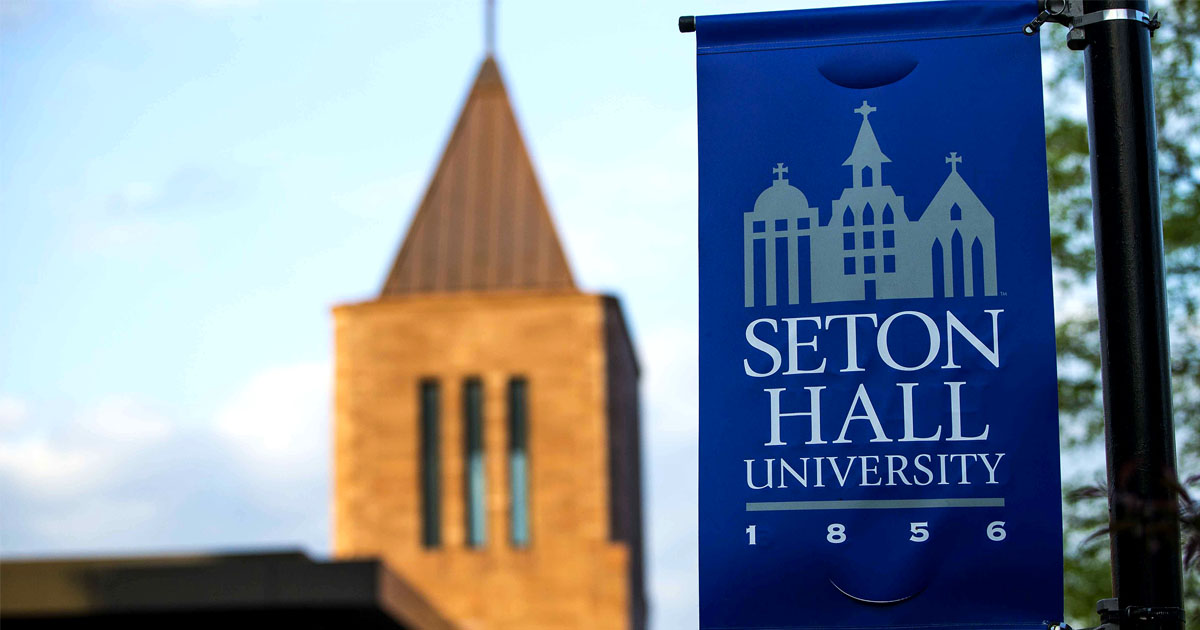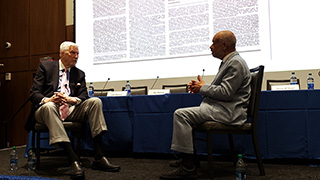Sports
Crossroads or Crisis? Panel Tackles the Pressing Issues in College Athletics

College sports are undergoing a significant shift. Name, Image and Likeness (NIL)
has moved athletics to a pay-for-play model, while the transfer portal gives them
newfound access to join and leave programs as many times as they want. Last month,
the Dartmouth College men’s basketball team voted to unionize, breaking ground as
the first group of student-athletes to form a bargaining unit in the country.
In the ever-changing landscape of college athletics, students must learn the importance
of adaptability if they aspire to someday work in this profession.
On April 21, the Center for Sports Media and Center for Sports Management hosted an event to examine the issues facing college sports with five esteemed experts.
The 90-minute discussion covered everything from NIL to unionization to the transfer
portal to the myriad of lawsuits against the NCAA, allowing students to connect and
learn with some of the most influential thought leaders in athletics.
 Center for Sports Media Founder Bob Ley kicked off the event with a table-setting introduction before welcoming Center for
Center for Sports Media Founder Bob Ley kicked off the event with a table-setting introduction before welcoming Center for
Sports Management Director Charles Grantham and former Congressman, NBA player, and Rhodes Scholar Thomas McMillan to the stage
for a 25-minute discussion about the current state of college athletics.
Grantham pioneered student-athlete compensation advocacy, first penning a piece calling
for college basketball players to be paid in The New York Times 34 years ago. The headline on that article was, “It’s Time to Give College Players
a Cut.”
McMillan is the current President and CEO of LEAD1, a membership association representing 133 NCAA FBS athletic directors. McMillan
self-described the organization’s goal to “bring [athletic directors] together and
coalesce around issues.”
College athletics is a multi-billion dollar business. Is there one easy fix to revenue
allocation? No, but given his lengthy involvement in the field, McMillan provided
his solution to accommodate all parties.
“I would like to see the student-athlete model remain,” he said. “I would like to
see those high-revenue sports have some kind of remuneration for those athletes. I
would like to see Title XI adhered to. I would like to see educational incentives
for kids to get degrees. I would love to see a whole new model of college sports that
is purely aligned with our institutions of higher learning but also expanding opportunities
across the board.”
Following Grantham and McMillan’s conversation, an expert panel led by Bob Ley featuring
The Athletic writer Dana O’Neil, former New York Giants player and Leonard Marshall (MFin, ’07),
and journalist/author Joe Nocera, joined the stage to expand the conversation regarding
college athletics.
The panel offered various perspectives on current industry issues, offering students
the ability to evaluate varying thoughts on NIL, the transfer portal and the NCAA.
Nocera was adamant that the NCAA needs to shift to a contract-based model similar
to that of every other professional industry.
“Jay Bilas has always had a great line on this,” said Nocera. How are you gonna pay
the players? And Bilas says, ‘Well, you know, we have this thing in America. It’s
called a contract.’ You say to the halfback, ‘ OK, I’ll pay you $250,000 a year for
three years, but you have to stay here for three years; you can’t transfer. You do
that for the people who create the economy for the university.’”
Marshall, who spent four years as a football star and is in the school’s hall of fame,
held a different view on the pay-for-play model as a former student-athlete.
“For a young kid, my mentality would be… I would have a different perspective on it,”
said Marshall. “I know I’m getting scholarships to play this sport. I know I’m playing
the highest-revenue sport on campus. What’s my goal when I go there? Get my education.
Go to the NFL.”
From O’Neil’s perspective, the NCAA’s stubbornness has troublingly shaped the current
landscape of college athletics. “There’s so much wrong, and so much they (the NCAA)
are trying to fix retroactively,” she said. “Everyone is playing catch-up because
the NCAA decided to be the ostrich with its head in the sand for such a long time,
and it has led to a disastrous intersection.”
You can watch the entire symposium here.
About Seton Hall’s Center for Sports Media
The Center for Sports Media, housed within the College of Human Development, Culture, and Media, works at the intersection of sports media and social life, reflecting the legacy
of its founder, Bob Ley, and his groundbreaking ESPN show, Outside the Lines. Established in Fall 2021, the Center is working to redefine how students are trained
in media, communications, and sports business by engaging with the sports community
while also producing groundbreaking content through University channels and establishing
innovative partnerships with major media outlets. Through the activities generated
and inspired by the Center for Sports Media, Seton Hall continues its tradition of
innovation in higher education, and underscores its commitment to experiential learning,
ethical leadership, and community engagement.
Categories:
Athletics









